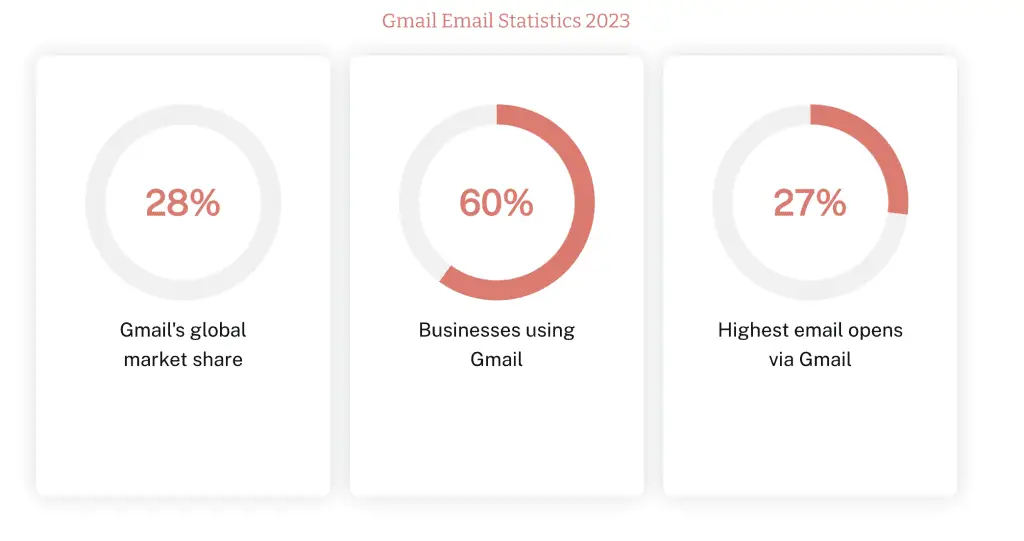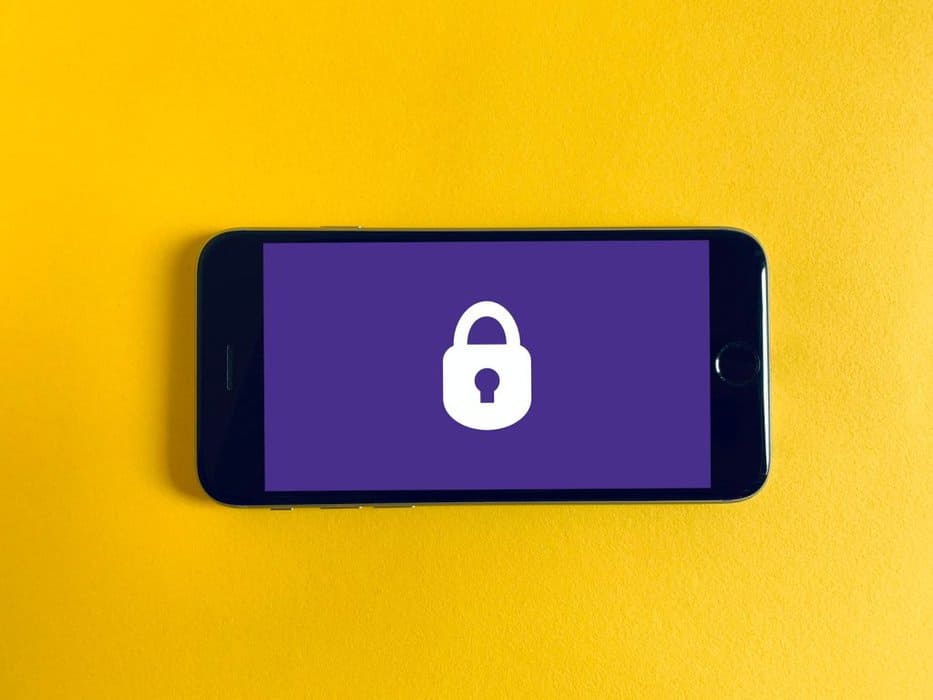In This Article

Your spam Gmail folder is going to be filling up again in 2024. Here’s the breakdown.
So, Gmail’s shaking things up again, and if you’re in the email marketing game, you’ll want to pay close attention.
TechCrunch just dropped the news that Gmail is rolling out some new rules in 2024 aimed at keeping spam out of users’ inboxes and sending them to the spam Gmail folder.
That’s great for those of us who are using Gmail as our primary inbox. But when we put our email marketing hats on — it’s a YIKES situation because we all know that tons of the email addresses currently in our email marketing platforms are gmail addresses.

Now, before you start panicking and imagining your beautifully crafted emails landing in the dreaded spam folder, take a deep breath. We’ve got you covered.
In this survival guide, we’re breaking down what these changes mean for you, the savvy email marketer. Whether you’re a solopreneur, coach, or consultant, you know how crucial Gmail is for reaching your audience. So, let’s get you up to speed on these new rules and make sure your emails keep hitting those inboxes where they belong.
Stay with me, and by the end of this article, you’ll have a game plan for navigating Gmail’s 2024 rules like a pro.
The New Spam Gmail Folder Rules: What You Need to Know

First things first, let’s get the facts straight. Gmail is tightening the screws on what gets to sit in a user’s inbox and what gets the boot to the spam folder. But hey, it’s not all doom and gloom. Understanding these rules can actually help you up your email marketing game.
Summary of Gmail’s New Rules
Gmail’s new policies are all about user experience. They’re cracking down on spammy behavior, irrelevant content, and, let’s be honest, those annoying “Buy Now!” emails that nobody asked for. So, what are the specifics? Here’s the lowdown:
- Stricter algorithms for detecting spam
- Enhanced user controls for marking emails as spam or not spam
- More rigorous authentication requirements
How These Rules Differ from the Previous Ones
You might be thinking, “Well, Gmail always had some rules, right?” True, but these new guidelines are like the old rules on steroids. The algorithms are smarter, the user controls are more intuitive, and the authentication hoops? Well, let’s just say you’ll need to be on your A-game.
The Impact on Email Deliverability
Here’s where the rubber meets the road. These changes could mean that your emails are more likely to end up in the spam folder if you’re not careful. But don’t sweat it; we’re going to dive into how you can adapt and even thrive under these new conditions.
Alright, that’s the 411 on Gmail’s new rules. Feeling a bit more clued in? Good, because next, we’re going to talk about why Gmail is making these changes and how you can turn them to your advantage.
Why Gmail is Cracking Down

First off, it’s all about user experience. Gmail wants to make sure that when you open your inbox, you’re not bombarded with spam or irrelevant content. Imagine sifting through dozens of “Get Rich Quick!” schemes just to find an important email from a client. Not fun, is it? By tightening the rules, Gmail aims to make the inbox a sanctuary of relevant, meaningful interactions. And let’s face it, a happy user is more likely to stay engaged, and that’s good for everyone involved—yes, even marketers like us.
But there’s another angle to consider: security. In an age where phishing scams and data breaches are as common as cat videos on the internet, Gmail is stepping up its game to protect its users. Stricter authentication requirements mean fewer chances for malicious emails to slip through the cracks. So, while it might seem like an extra hoop for us to jump through, it’s a win-win in the grand scheme of things.
Lastly, let’s talk about data. Gmail is sitting on a goldmine of user data, and by refining its algorithms, it can offer more targeted advertising options. That’s not just beneficial for Gmail; it’s an opportunity for marketers to reach their audience more effectively.
So, there you have it. Gmail’s new rules aren’t just arbitrary obstacles; they’re calculated moves designed to improve user experience, enhance security, and leverage data for better advertising. And understanding the “why” behind these changes can help us adapt our strategies to fit this new landscape.
How to Adapt Your Email Marketing Strategy

Alright, so you’re up to speed on what’s changing and why Gmail’s doing it. Now comes the part you’ve been waiting for: how to make sure your email marketing doesn’t skip a beat.
Tips for Dodging the Spam Folder
- Authentication is Key: Make sure you’re using SPF, DKIM, and DMARC records. These are your golden tickets to Gmail’s inbox.
- Quality Over Quantity: Gone are the days of blasting generic emails to your entire list. Personalization is the name of the game now.
- Engagement Matters: Encourage replies, clicks, and other interactions. Gmail sees these as signs that you’re not just another spammer.
The Power of List Segmentation
You wouldn’t talk to a first-time visitor the same way you’d talk to a loyal customer, right? Segment your email list based on behavior, interaction, or stage in the customer journey. Tailor your messages to fit these segments. Trust me, your audience will appreciate the personal touch.
Analytics: Your Secret Weapon
You can’t improve what you can’t measure. Keep an eye on open rates, click-through rates, and, yes, even the dreaded bounce rates. These metrics will give you invaluable insights into what’s working and what needs a tweak or two.
A/B Testing: Because One Size Doesn’t Fit All
Don’t just assume; test it out. A/B testing can help you figure out what subject lines, content, and sending times resonate most with your audience.
Keep It Real
Last but not least, be genuine. People can sniff out a phony from a mile away. Authenticity builds trust, and trust is the cornerstone of any successful email
So there you have it, your roadmap to navigating Gmail’s new 2024 rules and coming out on top. It might seem like a lot, but take it step by step. Adapt, test, measure, and adapt again. That’s the cycle of continuous improvement, and it’s how you’ll turn these changes into opportunities.
Use Case Tips and Strategies for Dealing with a Stricter Gmail Inbox
All-righty then, now that you have the details, let’s take a look at some practical ways that different types of businesses can update their email marketing strategies to deal with these changes.
Specific Strategies for Different Business Types
Retail

- Personalized Promotions: Use customer purchase history to send personalized promotions. Gmail loves relevance, and your customers will too.
- Inventory Updates: Keep your audience in the loop about new arrivals or restocks, but make sure it’s tailored to their interests to avoid the spam folder.
Professional Services

- Educational Content: Share industry insights, how-to guides, or legal updates. This positions you as an expert and keeps your emails engaging.
- Appointment Reminders: Automated but personalized appointment reminders can improve client relations and keep you in Gmail’s good graces.
Service
- Customer Feedback: After providing a service, send a personalized email asking for feedback. This not only improves your service but also increases email engagement.
- Maintenance Tips: Periodic tips related to the service you provide can be both helpful for the customer and beneficial for your email metrics.
Restaurant
- Menu Updates: Got a new seasonal menu or special offer? Share it with those who’ve dined with you before.
- Event Invitations: Hosting a live music night or a special holiday feast? An email invitation to past customers can be a hit.
Coaching and Consulting

- Resource Sharing: Offer free templates, eBooks, or webinars. Make sure they’re relevant to the client’s current challenges.
- Progress Reports: Regularly update your clients on their progress or milestones. This keeps them engaged and opens the door for more personalized interactions.
Freelancer
- Project Updates: Keep your clients in the loop with regular project updates. This not only builds trust but also ensures your emails are eagerly awaited.
- Industry News: Share relevant industry news or trends. This can spark a conversation and keep your emails from being marked as spam.
Key Takeaways
- Relevance is Crucial: The more relevant your email, the better its chances of avoiding the spam folder.
- Engagement is a Two-Way Street: Don’t just talk at your audience; interact with them. Ask questions, seek feedback, and encourage replies.
- Transparency is Non-Negotiable: With stricter rules around data and privacy, being upfront about your practices can set you apart.
So, no matter what business you’re in, these strategies can help you adapt to Gmail’s new rules and keep your email marketing game strong.
Navigating the Gmail Maze: Your Roadmap to Email Marketing Success in 2024

Alright, let’s put a bow on this. We’ve unpacked Gmail’s new 2024 rules, dived into the “why” behind them, and laid out specific strategies for different types of businesses. The bottom line? Change is inevitable, but it doesn’t have to be a roadblock. In fact, it can be a launching pad for better, more effective email marketing.
Remember, the key to navigating any change is to stay informed and be adaptable. Gmail’s new rules aren’t hurdles; they’re stepping stones to a more engaged, more targeted, and ultimately more successful email
You’ve got the tools, you’ve got the strategies, and now you’ve got the know-how. Go ahead, show Gmail’s new rules who’s boss!